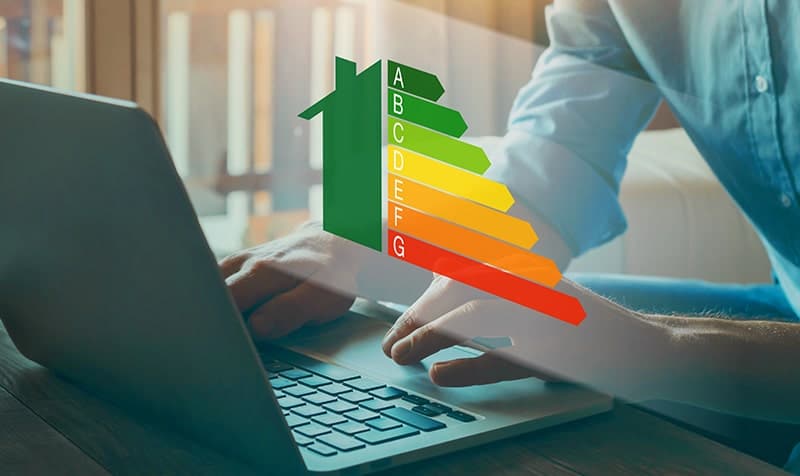Developers constructing residential premises require SAP calculations for Building Regulations compliance. SAP stands for Standard Assessment Procedure, and it’s the Government’s methodology for calculating the energy performance of new build properties (and, in some cases, new extensions and conversions). SAP calculations were first implemented by the Government in 1995 as a useful tool for helping deliver on its energy efficiency policies. After a number of revisions over the years, the latest iteration, SAP 2012, is now set to be replaced by the new SAP 10.
SAP 10 has been quite a while coming. It was first announced in 2018 for introduction in 2019/20, and the delays in its implementation can, in part, be explained by the pandemic. In fact, there’s still no definitive date for its launch, although some are predicting that it could be in June 2022. So, now’s the time to start familiarising yourself with the changes SAP 10 brings over the previous regime under SAP 2012.
Be careful, though. There are several versions of SAP 10 now, and the two earliest drafts, 10.0 and 10.1, are still available for viewing online. If you are readying yourself for the latest version, it’s SAP 10.2 you need to look at. In the meantime, until implementation is complete, SAP 2012 continues to be used for ensuring compliance with Building Regulations and for producing EPCs (Energy Performance Certificates), with U values still calculated in accordance with BR443 (2006).
Published on 20 August 2021, SAP 10.2 is said to be nearly complete and will be used by SAP assessors after its launch. But there are still one or two areas yet to be agreed upon by the experts. The first is how heat networks will be dealt with, which has been subject to a separate consultation by BEIS (the Government Department for Business, Energy and Industrial Strategy). The second is whether there should be a multiplier applied to the TFEE (Target Fabric Energy Efficiency). This will be decided after the outcome of the Future Buildings Standard consultation.
Overall, though, the new SAP 10 is expected to improve how SAP assesses the energy efficiency credentials of new residential buildings in the UK. It will also give designers and the construction industry a good idea of how buildings should be designed in future to claim the relevant energy-efficient status by meeting the carbon and energy requirements laid down in the Building Regulations.
While there’s still potential for changes before the SAP 10.2 is brought into play, there are some clear indicators that the following are likely to be some of the most major changes to the framework.
Replacing the outdated SAP 2012 methodology, it has been reported that the new SAP 10 will include a significant change in terms of reducing the CO2 emission factor for electricity. The current factor stands at 0.519 kgCO2/kWh, which will drop to less than half of this – to 0.233 kgCO2/kWh under the new regime. This reflects progress in reducing the carbon emissions produced by the National Grid. In essence, this will mean a greater focus on developers installing electric heating in new homes rather than gas, as it will be easier to secure favourable SAP calculations for Building Regulations compliance with heat pumps, electric underfloor heating and electric panel heating as the primary heat sources than with the more typical gas central heating system. In any case, there are plans elsewhere to prohibit the installation of gas boilers by 2025.
With the new set of compliance measures introduced by SAP 10, lighting designs will take into account the amount of daylight allowed into the dwelling, as well as the amount and efficiency of the fixed lighting installed therein. The SAP calculation will therefore look at specifications for windows during the design stage.
Another notable change expected to be introduced by SAP 10 is that for the very first time, the number of showers and baths a new build has installed will be counted. In order to calculate the hot water demand of a new property by a more accurate method, the calculation will consider whether showers are fed by electric or the mains, as well as proposed flow rates. In buildings where the predicted demand for water will be higher, the overall emissions will potentially increase.
Thermal bridging, a major source of heat loss from buildings, and fabric heat losses generally will play a greater role in SAP 10 calculations. The new system will eliminate the old SAP 2012’s low, medium and high indicators for Thermal Mass Parameter (TMP). Instead, it will include a detailed calculation of the dwelling’s actual TMP, which is based on construction, build material, and kappa values as well as U values. While there are no details for the thermal bridging, the default y-value has been increased from 0.15 w/m2k to 0.2 w/m2k. This will lead to a strict penalty imposed in terms of SAP calculations on designers who fail to consider heat loss on building junctions.
Choosing the Right Energy Consultants
This is just a brief snapshot of the changes we expect to see with the introduction of the new SAP 10.2. But getting the right level of precision and accurate details when performing an energy assessment should always be a priority in every building construction. If you are looking for advice or further guidance on SAP calculations for your project, you can trust accredited SAP assessors.
Briary Energy, one of the leading building energy consultants in the UK, can offer you a range of services to ensure that you meet the relevant SAP criteria for your new building. If you’ve been wondering, “how do you improve your rating for SAP calculations”, our experts can help. Whether you require energy consultancy on a new building or an extension to or conversion of a property, we can help remove the stress from the design and build process.
Let’s talk: get in touch with us today to book a consultation. Learn more about our services by visiting our homepage at briaryenergy.co.uk.

